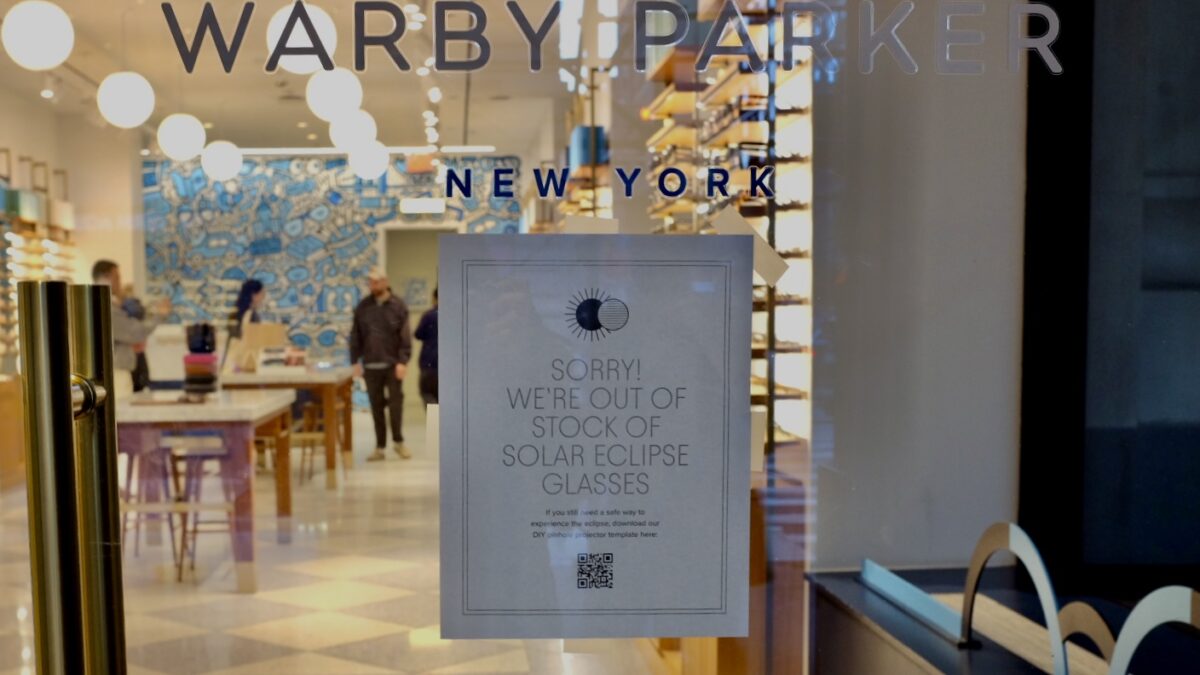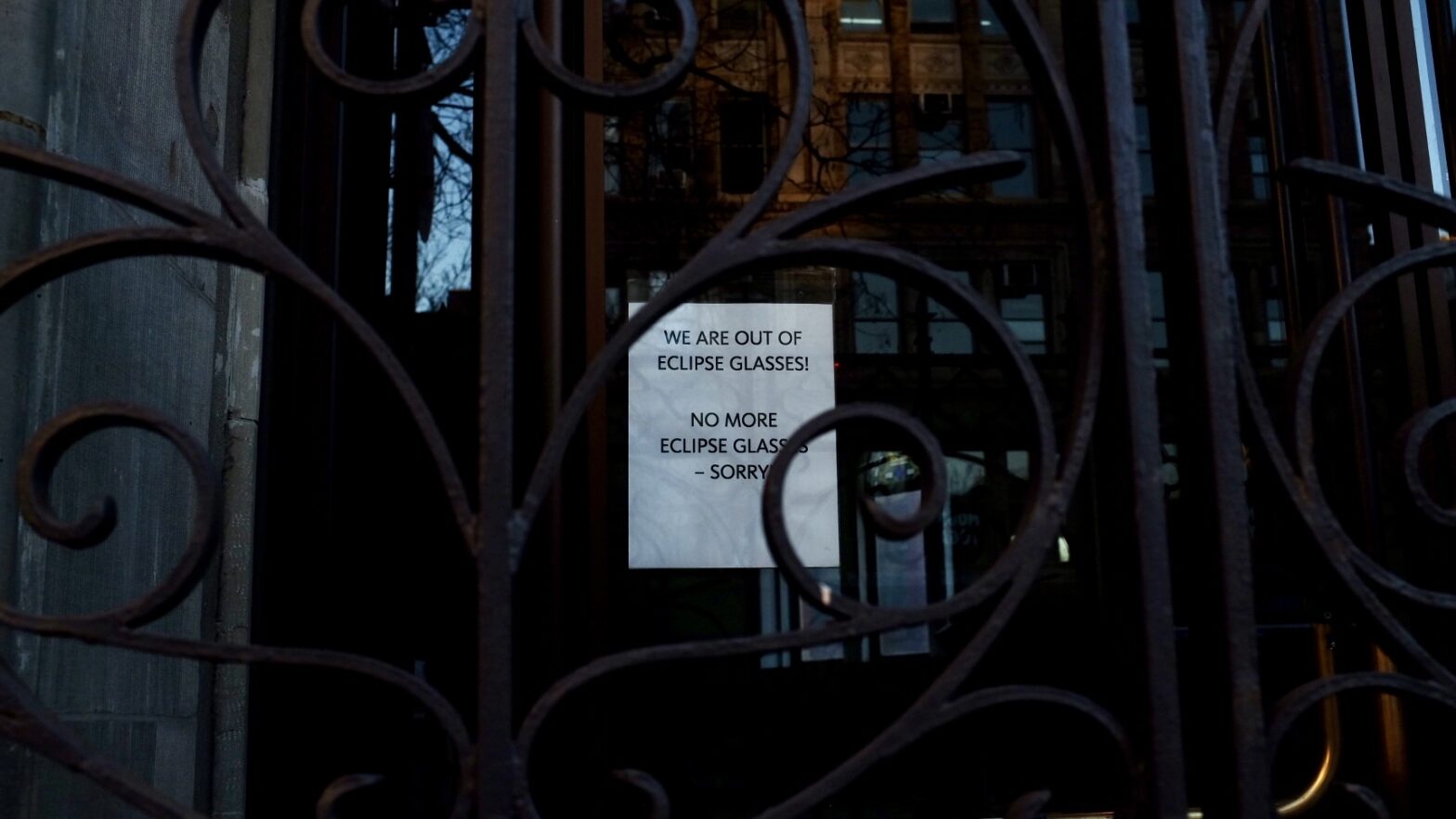A total eclipse will cross the United States on April 8th. It’s the first total eclipse visible in the United States since 2017, and the next one isn’t predicted to appear until 2044. New York City is just outside the path of totality, but will experience a partial eclipse. 90% of it will be visible from 2:10 p.m. to 4:46 p.m.
An eclipse happens when the sun, moon, and earth are aligned; an orientation in which the view of the moon seems to obscure the sun completely, leaving just the corona, the fringes of the sun’s plasma, visible.
This eclipse isn’t just any old celestial lineup. According to NASA, the path of totality is wider than that of the 2017 eclipse and aligns with more populated areas, which will make the special astronomical event visible to many more people. Totality is also predicted to last longer, about four-and-a-half minutes, compared to 2017’s 2 minutes and 45 seconds.
A solar eruption may also be visible. The sun is currently nearing a solar maximum, which means solar activity will be increased during Tuesday’s eclipse. This makes it more likely that solar flares and coronal mass ejections — massive eruptions from the sun — will occur.
During an eclipse, solar rays are incredibly bright which could cause eye damage if looking directly at the sun during the partial stages. In order to ensure a safe viewing experience, NASA recommends the use of eclipse glasses. Regular sunglasses will not protect your vision during an eclipse.
The Warby Parker store closest to campus is reportedly out of glasses. But the New York Public Libraries are giving out eclipse glasses for free. Jefferson Market Library on 10th Street and 6th Ave is the closest public library to The New School Campus. There are also free eclipse glasses available at Moynihan Train Hall.

If you are unable to access eclipse glasses, you can view the projection of the eclipse through something like Warby Parker’s DIY pinhole projector. Sunscreen is also a good idea if you’re planning on being exposed to the sun for an extended period of time.
There are plenty of ways to engage in eclipse fun around the city. New York City has some of the highest views in the western hemisphere, thanks to its architecture. There are eclipse viewing events at Edge, One World Observatory, and the Empire State Building. There are also plenty of lower cost options, including the eclipse event at the Museum of Natural History, which is pay-as-you-wish for students, the solar eclipse viewing party at Rockefeller Park, and many other free events across the city..
You can also view the eclipse from home with NASA’s livestream of the event.







